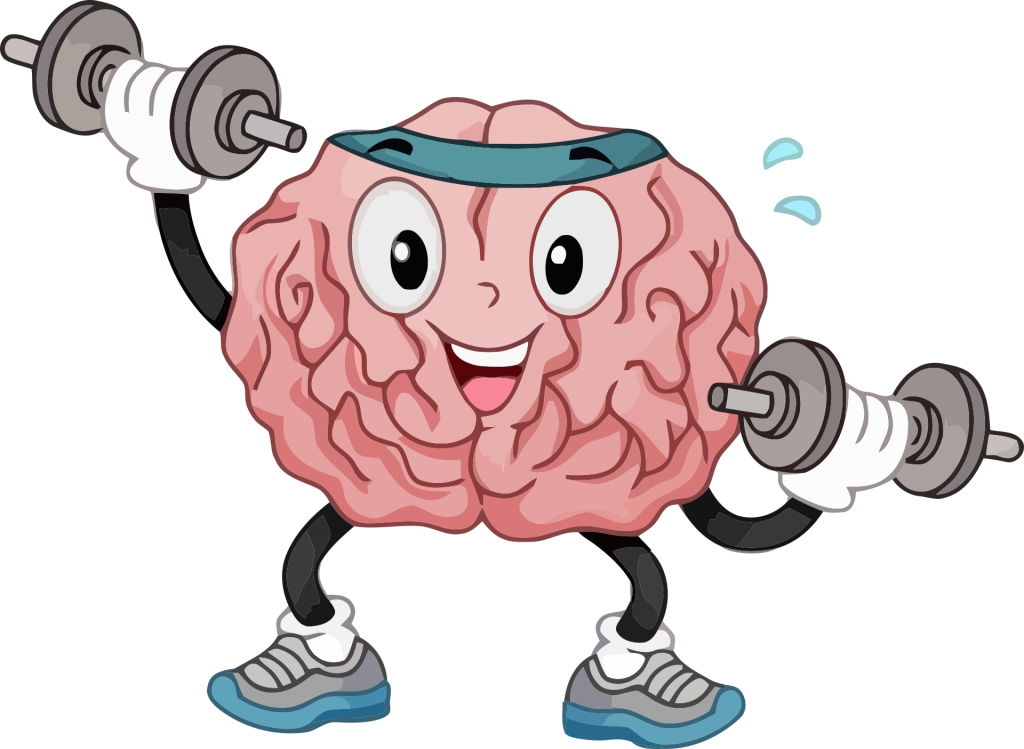Maximizing Muscle Strength: The Brain-Muscle Connection
4 min read
It is widely recognized that the maximal force output of a muscle is not solely determined by muscle size and strength, but is also influenced by neural factors, particularly the activation of motor neurons that innervate the muscle fibers. This is the reason why athletes and people who perform strength training often focus on improving their neural drive and motor control, in addition to increasing muscle size.
Unable to do Something Physically Despite being Fit – Question Your Brain
Have you ever found yourself unable to lift a weight or perform an exercise despite feeling confident in your ability to do so? The answer may lie in the complex relationship between your brain and muscles.
Research has shown that our muscle strength is indeed limited by the brain. This means that, even if our muscles have the potential to generate more force, our brain controls how much force is actually produced. The brain regulates muscle activation through a complex system called the neuromuscular system, which is made up of both peripheral (muscle) and central (brain) components.
One factor that can influence the brain’s ability to control muscle activation is fatigue. Fatigue is defined as a decline in the ability of a muscle to generate force. When we become fatigued, our muscles are not able to activate as strongly as they would normally, resulting in a reduction in muscle activation. This reduction is due to changes happening both within the muscle itself (peripheral) and in the central nervous system (brain). According to a review article by Enoka and Duchateau (2016), understanding the complex interplay between the peripheral and central components of the neuromuscular system can help us better understand the limits of muscle performance and fatigue.
How to Maximize Your Muscle Strength
However, there is good news! Improving our muscle strength and endurance through strength and endurance training can lead to adaptations in both the peripheral and central components of the neuromuscular system, allowing us to overcome some of these limitations.
Strength and endurance training can lead to adaptations in both the muscle and neural components of the neuromuscular system. According to a review article by Harridge and Nikooyan (2017), these adaptations can result in an increase in muscle size, as well as an increase in the recruitment and synchronization of motor units. These changes can lead to an improvement in muscle strength, allowing us to generate more force.
In addition, resistance training can lead to changes in the neural control of muscle contraction, including increased activation of motor neurons, increased synchronization of motor unit activation, and increased spinal reflex activity. According to a review article by Lee, Kim, and Kim (2017), these changes can help increase muscle strength and overcome some of the limitations imposed by the brain.
The process of improving our muscle strength and endurance through training is a complex one that involves both peripheral and central changes. However, the result of this process is a boost in our ability to generate force and overcome the limitations imposed by the brain.
Conclusion
our muscle strength is indeed limited by the brain. However, this limitation can be overcome through strength and endurance training, which can lead to adaptations in both the peripheral and central components of the neuromuscular system. So if you’re looking to maximize your muscle potential, consider incorporating strength and endurance training into your workout routine!
Key Takeaways:
Knowledge:
- Our muscle strength is limited by the brain.
- The neuromuscular system regulates muscle activation through peripheral and central components.
- Fatigue can reduce muscle activation by changing both peripheral and central components.
- Strength and endurance training can lead to adaptations in the neuromuscular system, increasing muscle strength.
Suggestions:
- Incorporate strength and endurance training into your workout routine.
- Consider adding resistance training to your routine to improve the neural control of muscle contraction.
Actions for Readers:
- Start a strength and endurance training program to maximize your muscle potential.
- Focus on both peripheral and central adaptations by incorporating a variety of exercises into your routine.
- Be mindful of the impact of fatigue on muscle activation, and allow for adequate rest and recovery.
References
Enoka, R. M., & Duchateau, J. (2016). Neurobiology of muscle fatigue. Journal of Applied Physiology, 121(3), 565-576.
Harridge, S. D., & Nikooyan, A. A. (2017). Muscle fatigue: a review of mechanisms. Frontiers in Physiology, 8, 1018.
Lee, Y. J., Kim, J. H., & Kim, H. S. (2017). Factors affecting muscle fatigue during dynamic contractions: a review. Annals of Physical and Rehabilitation Medicine, 60(3), e70-e77.





